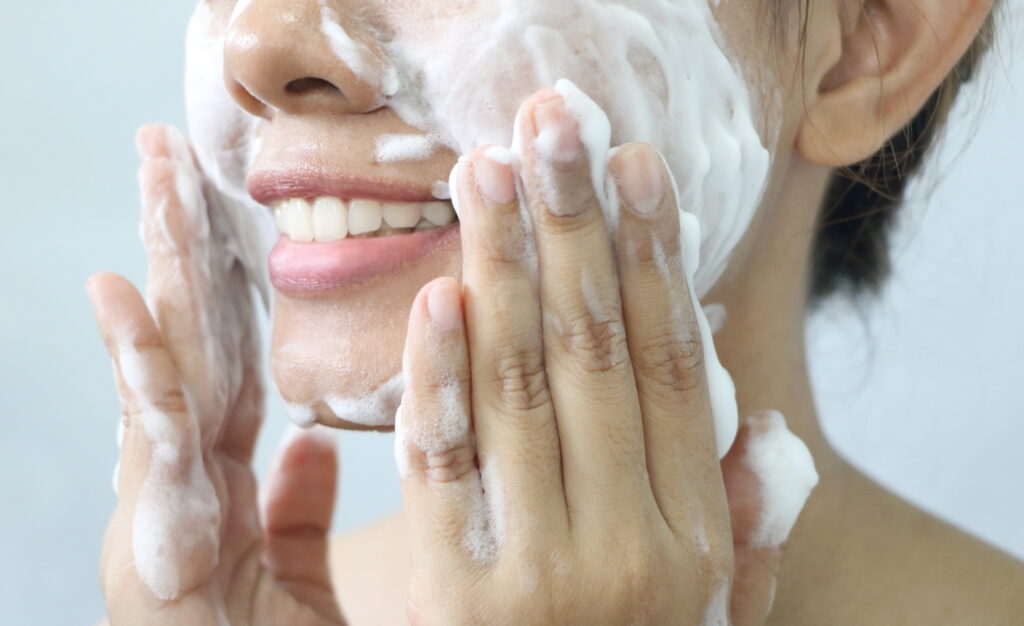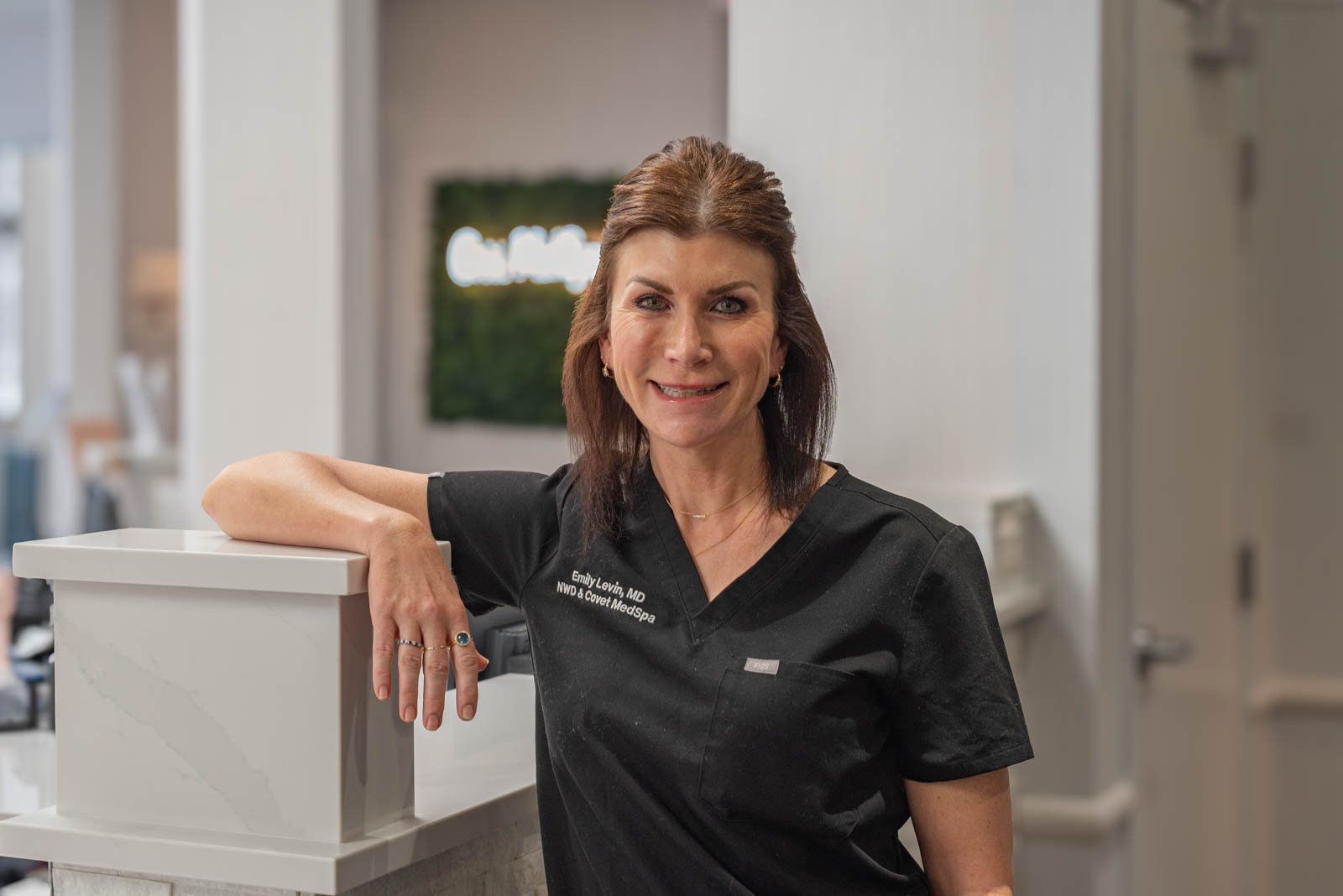Pores get a bad rap. Staring at our reflections in the mirror, we worry that our pores are too big, too prominent, and too distracting. We think about how we can make them smaller and less obvious. We wonder why we have them at all. Here’s how to change the appearence of your pores.
The fact is our pores matter a lot. They’re part of the skin, and they play an essential role in what is the body’s largest organ. Much as we’d like to get rid of them altogether or at least make them smaller, the basic size of one’s pores is determined by genetics. Fortunately, there are several ways to minimize their appearance. To do that effectively, it helps to understand what pores are and how they work.

What You Need to Know about Skin
The anatomy of your skin is complex. This amazing substance covers your entire body, forming a protective shield against heat, light, injury, and infection, simultaneously regulating body temperature, storing heat and water, functioning as a sensory organ, and acting as a barrier between the organism inside and the exterior environment. Skin comes in an endless array of colors, thicknesses, and textures which vary by individual, but the three-layer structure is consistent for everyone.
- The epidermis is the thin outer layer made up of three types of cells: the outermost squamous layer, a second basal layer, and the melanocytes that give skin its color.
- The dermis is the middle layer, containing blood vessels, lymph nodes, hair follicles, sweat glands, collagen bundles, fibroblasts, nerves, sebaceous glands, and pain and touch receptors. Pores carry the products of these structures to the surface of the skin.
- Subcutaneous fat is the deepest layer of the skin. Made up of a network of collagen and fat cells, it conserves heat and acts as a shock absorber against injury.
Pores are tiny openings in your skin; each is between 250 and 500 mm in size (definitely small). A pore surrounds a hair follicle; each follicle can grow one shaft of hair, whether that hair is visible or not. Pores also connect with sweat glands. As an adult, you have some 5 million pores in your body, everywhere except the palms of your hands and soles of your feet; approximately 20,000 are on the face. The function of pores is to move oil, sweat, and other substances to the surface of your skin.
The most important of these substances is sebum, an oily, waxy mixture made up of fatty acids, sugars, lipids (fat molecules), and other elements; the function of sebum is to moisturize, lubricate, and protect your skin. While sebum is produced all over the body, it’s concentrated in the face, where it can contribute to acne and other breakouts. That, in turn, contributes to those frustratingly large pores.

Ways to Minimize Prominent Facial Pores
Several factors contribute to the size and appearance of your pores, including genetics, age—skin becomes less elastic with age, making pores seem larger—sun exposure, and skin type—oilier skin may lead to more noticeable pores. Since you can’t shrink pores by changing the genetics that dictate their size, you want to concentrate your efforts on things you can affect.
- Be gentle. Aggressively attacking your skin with strong cleansers or harsh implements only dries and irritates it, making your pores look bigger and redder. Wash your face twice a day only using gentle products and lukewarm, not hot, water, gently massaging as you cleanse. A routine that includes morning and evening cleansing is important, morning to wash away impurities generated during the night and evening to remove the day’s gunk and makeup before going to bed.
- Keep pores clean. Pores enlarge when clogged with oil, sweat, dirt, and dead cells. Blackheads form when trapped dirt turns dark; acne happens when debris accumulates. Clean, clear pores are less visible, more attractive, and as small as genetically they can be.
- Find the right makeup and products. Knowing your skin type (normal, dry, oily, or combination) lets you use compatible formulas. Gels and light foams work well with oily and combination skin; creams and balms are more suited to drier types. A gentle moisturizer is a good idea for everybody. Makeup can mask pores, so experiment until you find items that match your skin type and enhance your appearance. Products labeled noncomedogenic are best because they eliminate sebum backup. Stay away from alcohol and fragrances; they can dry and irritate. Matte formulas are best because they blur the look of your pores.
- Exfoliate, carefully. Exfoliation can get rid of the dirt and debris that fill and enlarge pores. But be careful, harmful chemicals and abrasive implements make things worse by damaging the skin. Once a week is plenty. Appropriate products are alpha hydroxy acids (AHAs) for dry or sensitive skin; beta hydroxy acids (BHAs) work well with oilier skin.
- Use sunscreen daily. No matter the weather, always protect your skin with a minimum SPF of 30. Sun damage leaves skin less firm, which makes pores more visible.
- Try retinoids. Retinoids boost skin cell turnover, helping minimize the prominence of pores. Substances like vitamin A derivatives (tretinoin and isotretinoin) clear out dead skin cells, free pores, shrink oil glands and increase the production of collagen, which keeps skin supple. But beware of skin irritation and stop using retinol if redness appears.
- Consult a dermatologist. If over-the-counter products aren’t working, a dermatologist or other skin specialist can prescribe stronger retinoids and other medications. Professional treatments such as microneedling to plump up skin and lasers to resurface the skin are available as well.
Your pores are fundamental to proper skin function. They are not flaws to be corrected; instead, think of them as an integral and necessary part of who you are. Following the practices described here can help keep your pores at optimal functionality, contributing to the healthy, glowing skin we all want. Here’s how to change the appearence of your pores.



